top of page

Role: Aerostructures Manager
Organization: Knights Experimental Rocketry
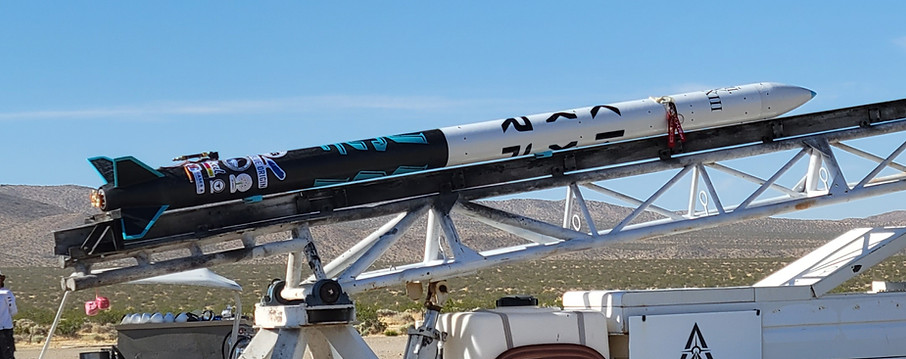
Valkyrie on the launch rail at FAR
Valkyrie was the first liquid bipropellant rocket designed and launched by a Registered Student Organization from the University of Central Florida. It was designed to compete in the Friends of Amateur Rocketry (FAR) Dollar Per Foot (DPF) competition. This competition required teams to use a liquid bipropellant engine, launch, and successfully recover. Every foot in altitude resulted in a dollar back to the team.

The project started in August 2022 with the design of the bi-propellant propulsion system, which was inspired by Half Cat Rocketry. I joined the team as a freshman and quickly became involved with the fluid systems team. I designed the P&ID for the fluid system and spearheaded the development of the quick disconnect mechanism.
P&ID of the fluid system
Above is the PDR for the propulsion system. I was responsible for the P&ID, Bolt Shear and Hoop Stress calcs, and Quick Dissconnect.
By December, our team had finished our design of the propulsion system and began ordering materials to begin manufacturing. It was at this time that the club decided to create an Aerostructures team to design and build the airframe of the vehicle. I was promoted to Aerostructures manager and began assembling a team of leads and members.
I had never designed or manufactured a rocket or anything of this scale up to this point in my life. Excited by the challenge in front of me, I dove headfirst into learning about rocket design, composites, and the dynamics of flight.

First Composite Test Article


First Airframe Tube
Postprocessing Flight Articles

Successful Recovery Test
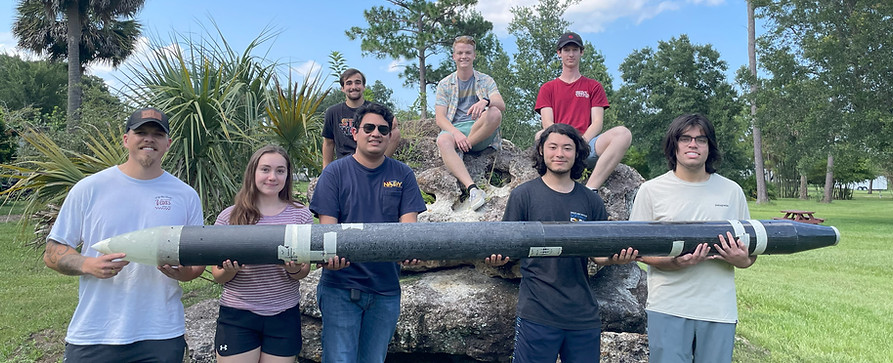
First Dry-Fit of the Airframe

First Wet-Dress Rehearsal of the Vehicle
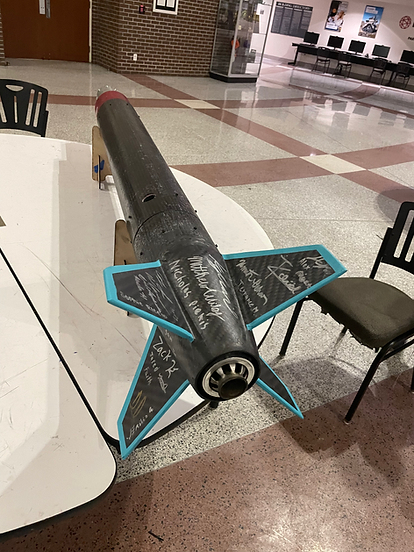
Finished and Signed Boat Tail
In less than 6 months, through the knowledge of experienced mentors and a devoted team, we were able to design, build, and test our airframe.


Valkyrie stood tall at over 10ft, weighed around 60lbs, and sported a unique boat tail. The crowning feature of the airframe was the aerodynamic boat tail integrated into the fin can. This section of the airframe greatly increased our altitude, which was a major focus for our team as we competed in an altitude-based competition.
The main body tubes and boat tail of the airframe were constructed out of wet-lay carbon fiber composites. The nose cone and internal coupler were fiberglass. All major composites on the vehicle were designed and manufactured by my team.
I am incredibly proud of my work on Valkyrie and the spirit of the team that I led. Our drive and passion kept us together as we worked through new challenges and learned together.
Two key features of the airframe hold a special place in my heart. The first being the boat tail, an aerodynamic taper to the end of the airframe that structurally integrated the fins and motor into place. This feature initially caused a great deal of controversy in the club, as no team had attempted a feature like this before. Our team was stubborn and trusted our math on why the boat tail was valuable. In the end, it helped us gain several hundred feet in altitude, which translated to several hundred dollars in competition reward cash.
The second feature of the airframe that is special to me is the color and graphical design of the airframe. I always make sure to put the extra mile into presenting my work in the best way possible. Our team poured countless hours into this airframe, and I wanted to make sure that effort was visible to anyone who looked at it. I based the colors around UCF's popular "SpaceU" design, using light blue to highlight accents, and base colors of black and white for contrast.
Fun fact, the date in roman numerals at the top of the vehicle is the date of our first successful static fire.



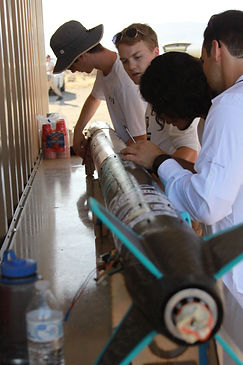
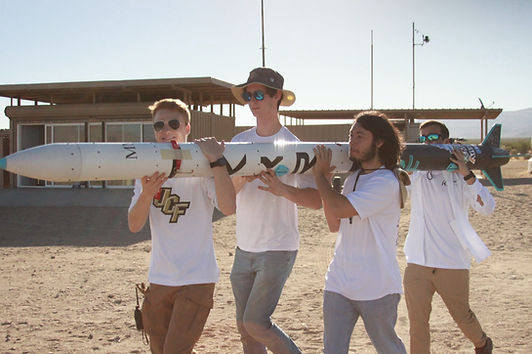
Finally, in less than a year, on July 15, 2023, Valkyrie took to the sky. Launching to an altitude of 4,884 ft. and successfully recovered, winning our team more than $4,000.
It was very hot out in the Mojave Desert that day, and our team had to scrub on our first launch attempt due to an electrical issue. Eventually, we got vertical for the second time, barely before our launch window closed. I still remember the flood of emotions watching Valkyrie launch for the first time, and it is part of what fuels me to continue learning as an engineer today.
Final Integration Before Launch
Carrying Valkyrie out to the Rail

Team Photo with Valkyrie on the Launch Rail
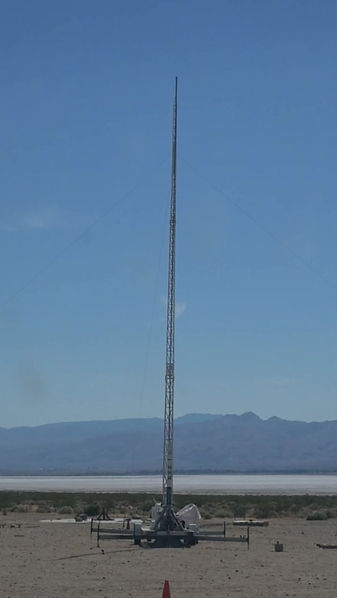
Launch Footage

Landing

Valkyire back from launch

Recoverying Valkyire

Finally cathing sleep after staying up for over 30 hours to get Valkyire launched
I will forever be grateful for the opportunity to work on this project. It set the bar high for my future endeavors and created a solid foundation in rocketry. It also allowed me to grow as a leader and engineer, and I am grateful for the patience and grace that my team provided me throughout it all.
If you are ever in the Engineering Atrium at UCF, take a look towards the main doors, you may hopefully still see Valkyrie standing tall on display.
bottom of page